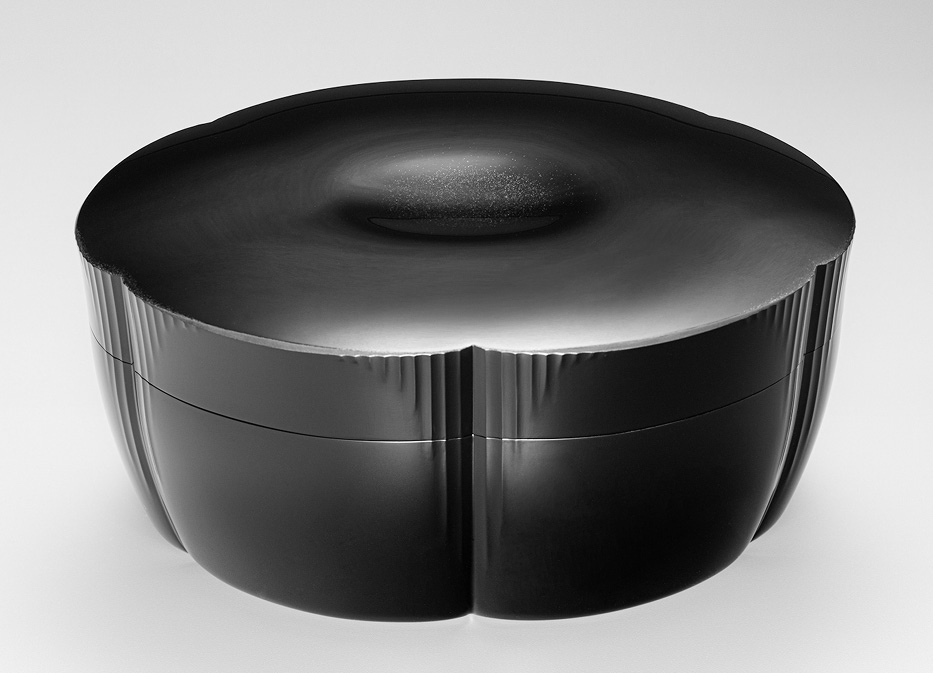Panel Discussion

Grand Prize Winner
TAMAYA (MC) ───── After that long introduction, I would like to move to the comments on the works. We would like the jurors to talk about each prize winner with their impressions and comments.
First, we would like to start with the Grand Prize winner, “Kanshitsu Makie Box Ume Blossom” by Kansei ARAI. Professor OHNISHI, please give your comments.
OHNISHI ───── Good morning, everyone. Nice to see you again after 3 years. Welcome to the Special Symposium for the Ishikawa International Urushi Exhibition 2023. The previous exhibition was held just as the Covid-19 pandemic had started. Now, the measures have eased, though we still face difficulties in the world.
This is the exhibition’s thirteenth event, and I have been involved in this exhibition, the only international urushi exhibition, since it started. Before it was established, no such exhibition or competition existed in the world. We were delighted to have the opportunity to talk about urushi with people from all over the globe, thanks to the effort and support from Ishikawa Prefecture. I have been a juror since the first exhibition and thanks to everyone’s efforts, it has become well-regarded as an international exhibition.
Unfortunately, the circumstances of the world have been unstable with the Russian invasion of Ukraine. The country of Russia has a lacquer culture, or rather a varnishing culture, which comes from the Byzantine tradition. This Christianity owes a lot to the spirituality of Byzantine culture. In particular, cultures that follow the flow of the Danube River exist at places like the terminal stations of the Silk Road.
I have an appreciation for Russian culture in many ways and for many reasons. I was delighted with the fact that recently more and more Russian lacquer artists have participated in the Exhibition. At the beginning we only received a single work, but the number of submissions gradually increased; one to two, two to three. However, this time, we didn’t receive any. The culture from along the banks of the Volga River was not present this year. I’m afraid this reflects the present social circumstances.
There is something profound about the culture of lacquer. It is not as simple as just applying color – for each layer of lacquer, we urushi artists concentrate our hearts and minds into the application. That’s why the results express our minds perfectly. The village of Khokhloma is located on the banks of the Volga River in Russia and it is home to a craft tradition of painted and varnished wooden objects, that are reminiscent of Japanese kokeshi dolls. There are many varieties of objects made in this Khokhloma style. I had hoped for some people from that area to participate so that the relationship with urushi artists could flourish, but I am saddened with the current situation. This shows that unless there is peace in the world, beautiful culture can’t develop. Japan’s urushi culture is one of the richest among the world’s lacquering cultures.
The Grand Prize winner, Mr ARAI is not present at the symposium today. This piece appears to have been exhibited at a traditional crafts exhibition. It looks like a typical traditional craft vessel, but the shape is not concentric circles, so the shape is made of kanshitsu (dry lacquer). The edges are skillfully and gently treated, and the shape is a perfect condensation of the sensibilities cultivated in Japan. He has pursued his craft to the highest level of skill. The box has a gentle impression thanks to the delicacy of the application, and it evokes a nighttime atmosphere. Mr ARAI also mentioned this particular point, which is expressed so well. Beyond that, he perfected the box by using precise techniques here and there in forming. At the same time, he is considerate in making the techniques not so conspicuous.
The artist of this work teaches at the Tokyo National University of Fine Arts and Music. This work is impeccable. At the Final Assessment, all the jurors actively exchanged their opinions in the discussion and they reached the conclusion that the Grand Prize must go to this work. This has a gentleness with a unique aura. It expresses the pinnacle of urushi culture.

大賞
乾漆蒔絵箱 夜梅
Kanshitsu Makie Box Ume Blossom
W28 × D23 × H12
新井 寛生
ARAI, Kansei (Japan)
